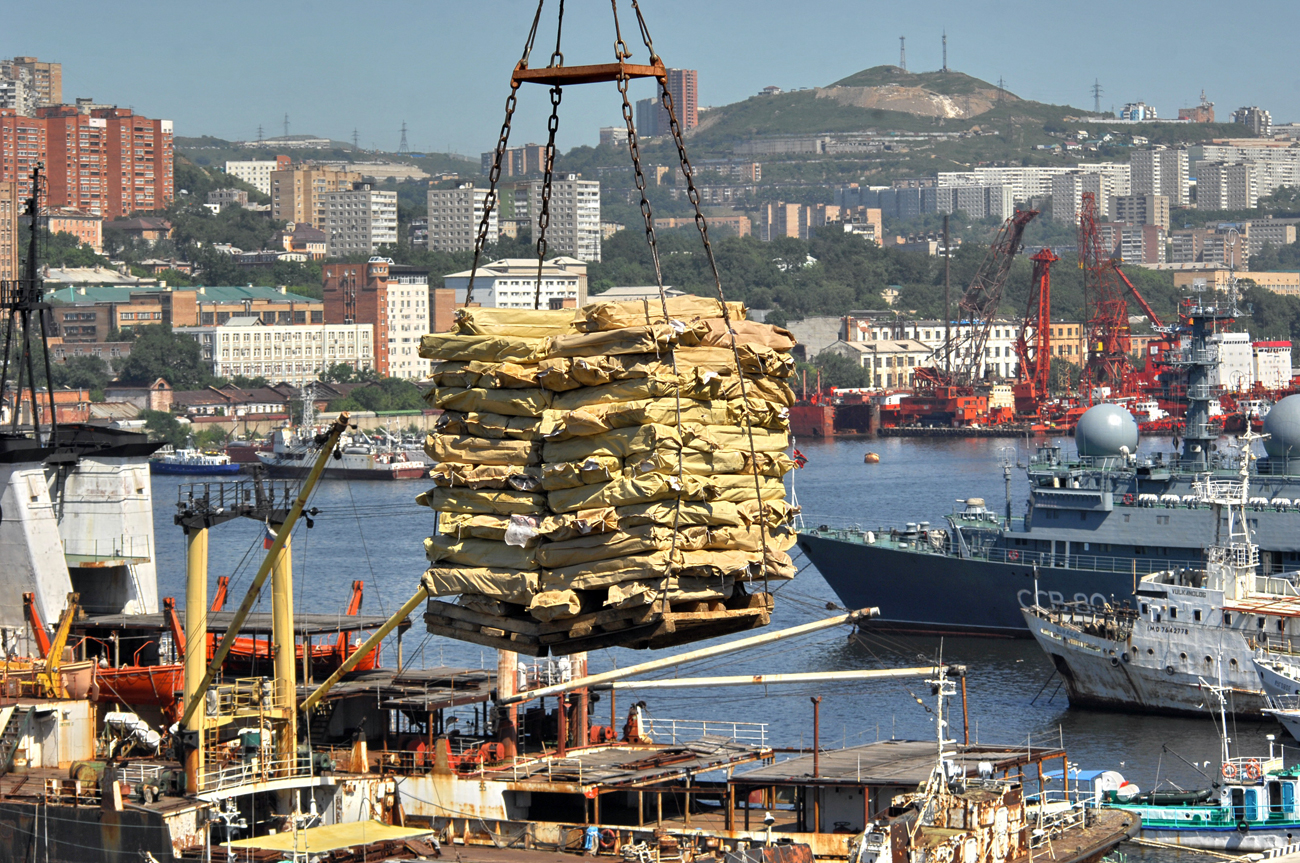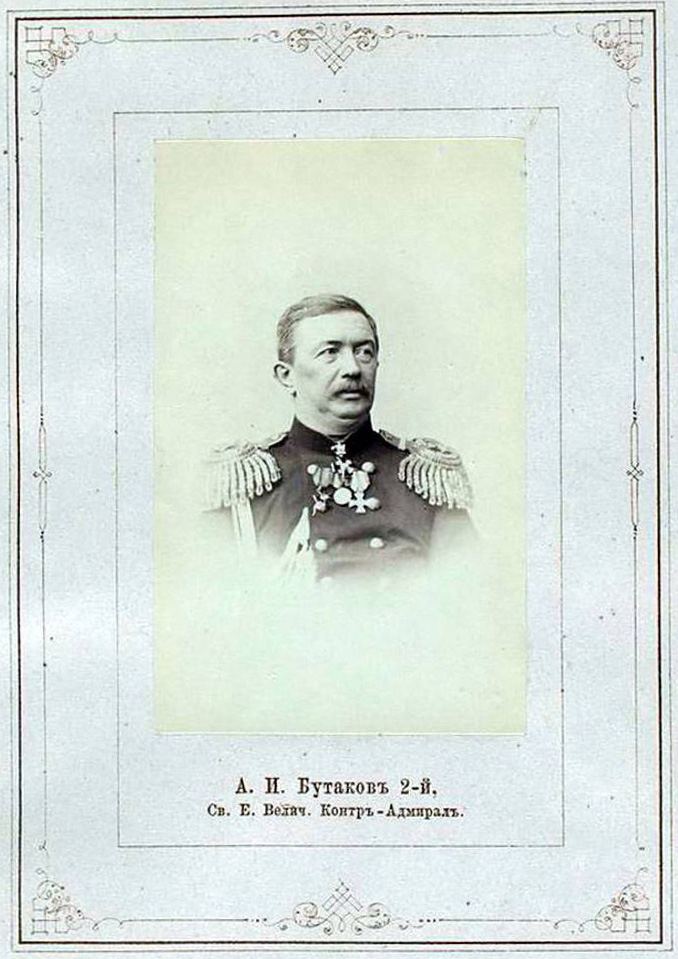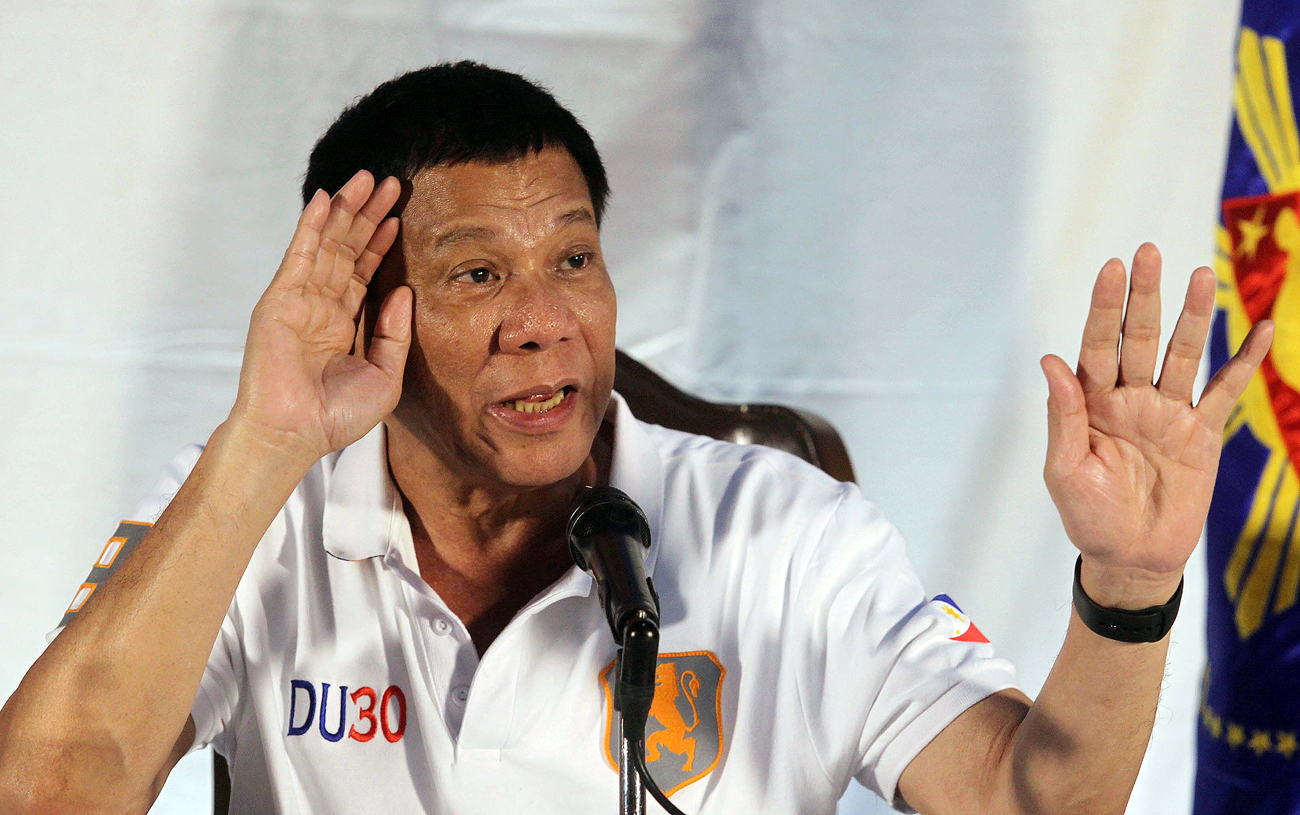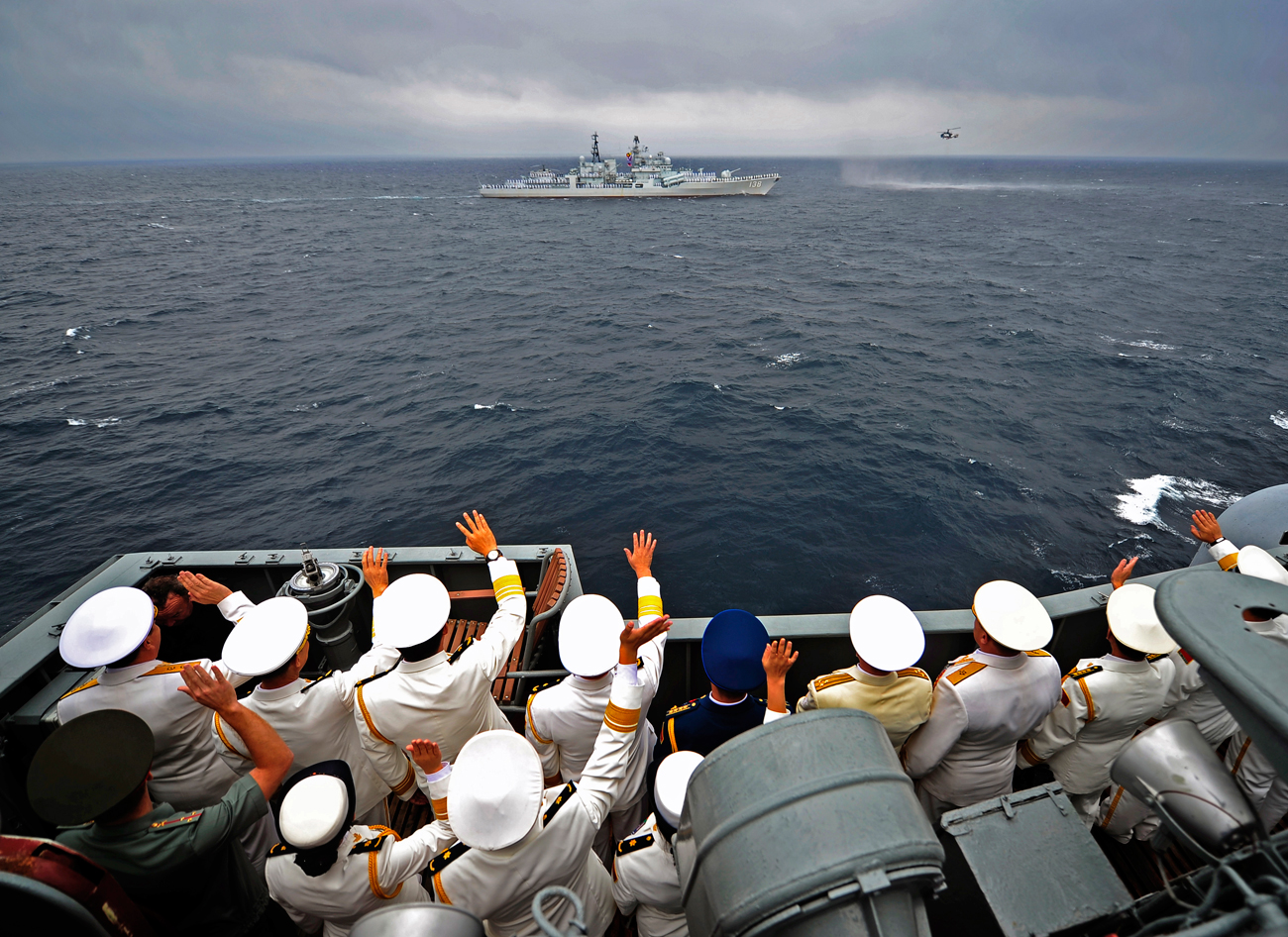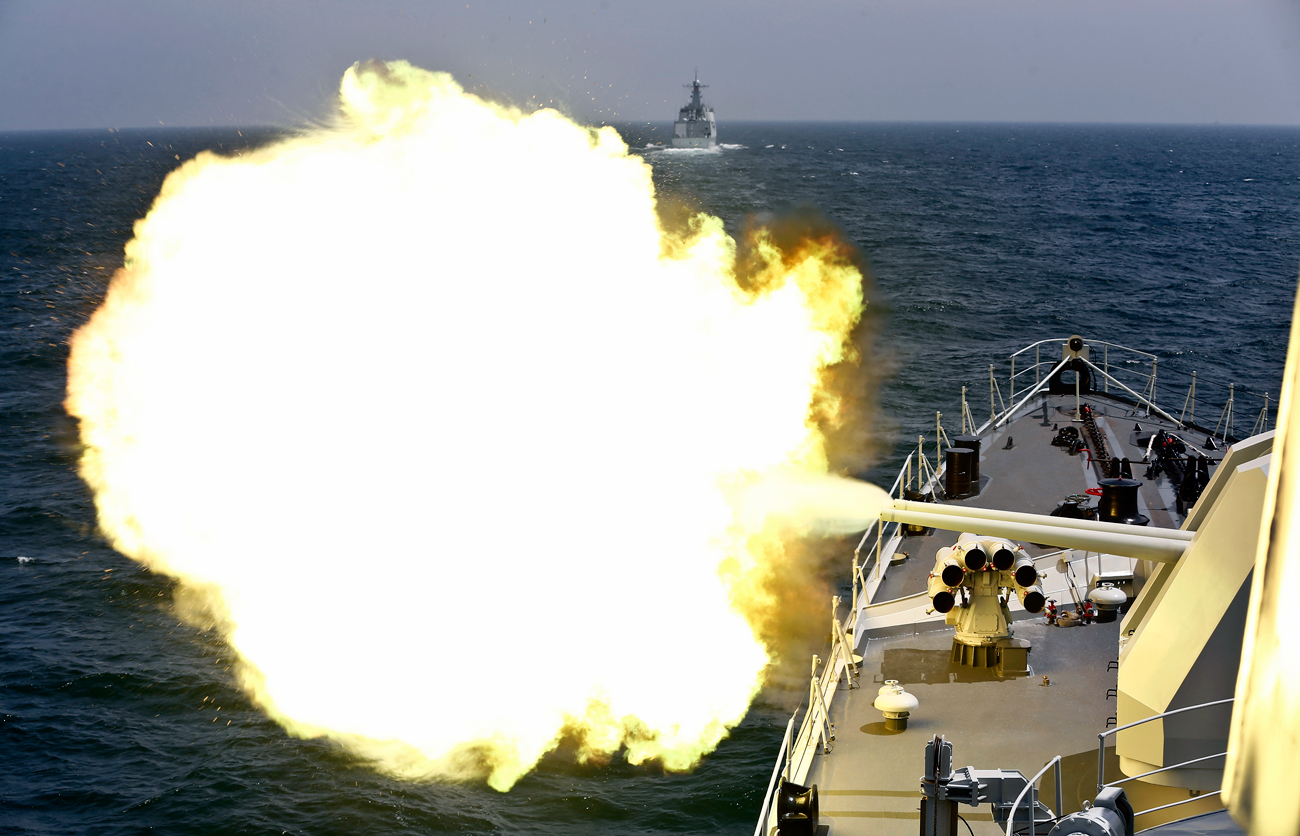Southeast Asia: Is flirting between U.S. and Vietnam a threat to Moscow?
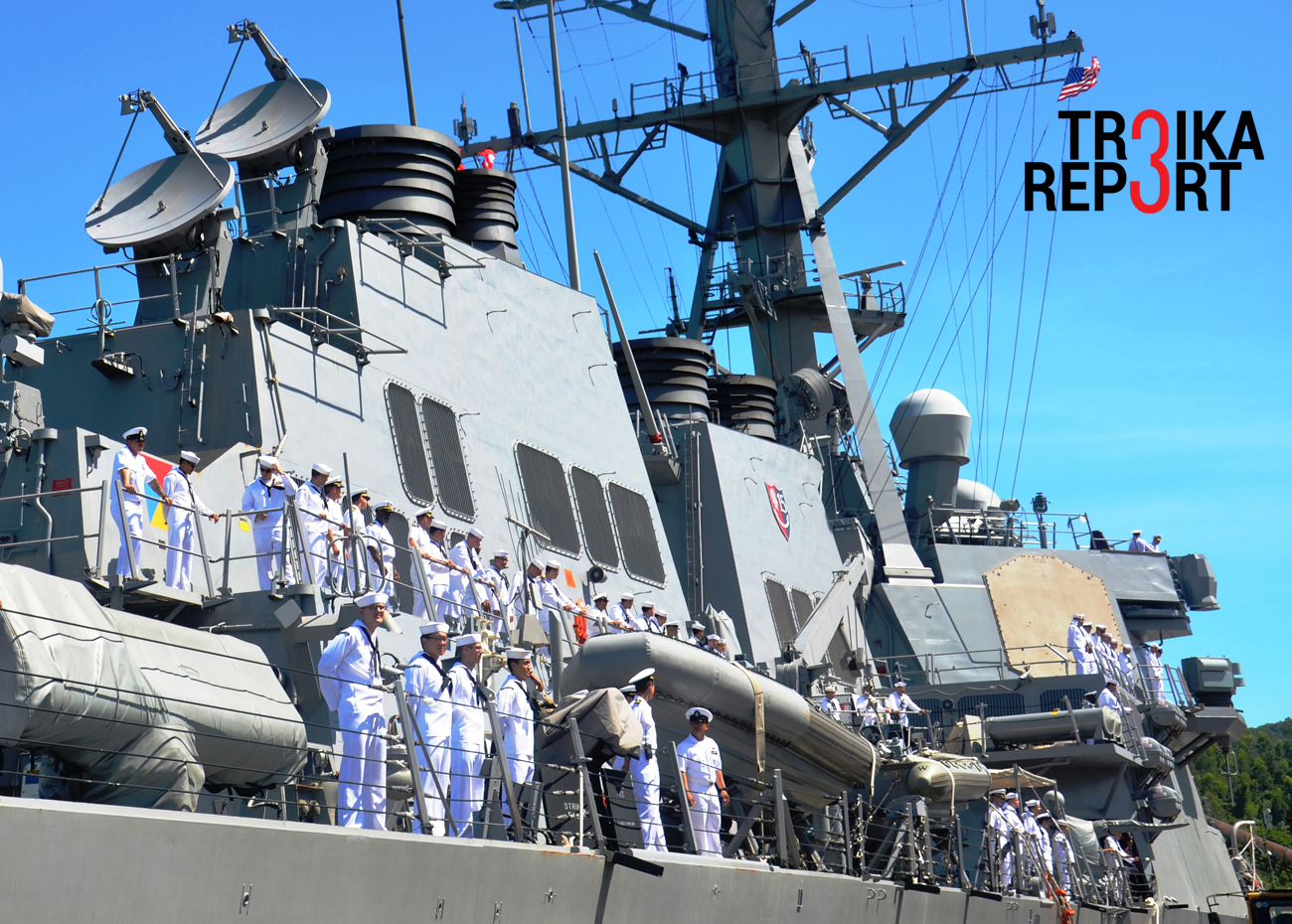
This handout photograph taken and released on Sept. 28, 2016 by the US Embassy in Hanoi shows the U.S. Navy guided missile destroyer USS John S. McCain (DDG-56) at Tien Sa Port in Danang.
U.S. Embassy in Hanoi/AFP/East NewsFor the first time since the United States and Vietnam restored diplomatic ties in 1995, burying the hatchet of the bitter war they fought from 1965-1975, two American warships entered Vietnam’s Cam Ranh Bay, a strategic naval base, on Oct. 2.
The tandem consisted of submarine support vessel USS Frank Cable and guided-missile destroyer USS John S McCain. The destroyer is named after U.S. admirals, John S. McCain, Jr. and John S. McCain. Cindy McCain, wife of Senator John S. McCain III, grandson and son of the renowned naval officers, sponsored the launch of the ship.
The irony of history is hidden in the fact that during the Vietnam War, Senator McCain, a deck aircraft pilot, was shot down over Hanoi by a Soviet surface-to-air missile, landed in a lake with both arms and legs broken, and then spent five years in prison for war crimes.
Today, Senator McCain is champion of U.S.-Vietnam military ties as Washington seeks to limit the expansionist tendencies of China (not to forget the senator’s acute antipathy to Russia).
Comrades in arms and charms
Moscow experts have remained cool and unimpressed by the naval exercises between the U.S. and Vietnam, downplaying the consequences for the geopolitical alignment of Hanoi.
It has been reported that for the sake of “diversifying” arms suppliers Vietnam has contracted instructors from India to train its crews on Russian-built submarines, and is also testing the water for purchasing weapons produced by Israel. Some claim this is an indication of a change of tune and list of priorities, while others dismiss the assumption.
Approached by RBTH, Yevgeny Buzhinsky, a retired two-star general and senior vice-president of the PIR Center for Policy Studies, a Moscow-based independent think tank, noted that Vietnam has changed lately:
“It is no longer the Vietnam of the days of the Soviet Union. It is pursuing a multi-polar foreign policy. However, Russia is likely to remain for the time being, in particular, in terms of providing arms and armaments, Vietnam’s main partner.”
– Could the Cam Ranh naval base become a springboard for surging military cooperation between Russia and Vietnam?
“This is hardly the case, for the moment. The Russian military have been offered the use of the base for repairs and maintenance, for bunkering, for replenishing stocks of fresh water, and as a rest place for the crews to recuperate after long hauls. Vietnam is not considering turning Cam Ranh into a Russian naval stronghold in the region.”
However, the realities on the ground still favor Russia, the heir to the sponsor of Vietnam’s victory over a belligerent and mighty opponent. A staggering 93 percent of the hardware used by the Armed Forces of Vietnam was manufactured either in the USSR or in Russia, and replacing this weaponry would take years and require enormous investments.
Writing for the Izvestiya daily, Viktor Litovkin, a military observer for the TASS news agency, made the tongue-in-cheek remark that for the Vietnamese it does not make much sense “to replace the weaponry that brought them victory over the United States with weapons from those who lost the war.”
Is Hanoi playing the anti-China card?
Vietnam’s holding of naval exercises with the U.S. fleet is being presented by much of the English-speaking media as a sign of defiance and a signal to Beijing amid ongoing tensions in the South China Sea.
The U.S. observers usually point out that Hanoi is eager to engage with its former foe only because China has grown “more assertive” (e.g. Jane Perlez’s article in The New York Times).
“Vietnam wants to use the prospect of the U.S. establishing a long-term presence at the base as a source of leverage to shape Beijing’s behavior, and as a bargaining chip to gain further concessions from Washington in other issues, such as trade and human rights negotiations,” said Dr. Le Hong Hiep, a research fellow at the Iseas-Yusof Ishak Institute.
How close to reality are these conclusions? Professor Alexander Lomanov, Head Research Fellow at the Russian Academy of Sciences’ Institute of Far Eastern Studies, offered RBTH an alternative assessment of the actual state of play in relations between Hanoi and Beijing.
“Definitely, the game of ambitions and clash of interests is not the monopoly of the Euro-Atlantic region, as we often tend to believe in Moscow. Asia provides a plethora of examples of the same kind of intricate geopolitics.
“Vietnam was truly unhappy when two years ago China set up an oil rig in the vicinity of the disputed Paracel Islands (Hoang Sa Islands) and has reacted angrily to the recent construction of artificial islands with military runways quite close to its shores. Beijing apparently wanted to water down the suspicions by offering a joint use of these installations for the sake of regional security.”
– It was a rather hard sell, and Vietnam didn’t buy it, did it?
“As an expert who routinely monitors the Chinese media, I am impressed by the consistency of the good-natured overtures toward Vietnam. Ideological kinship is played up. Beijing, it is noted, would not like to see Vietnam accidentally squander this attachment, allow the pro-West faction in the leadership take the upper hand, and eventually fall into the trap of what they term ‘degeneration’.”
– Yet it looks like Beijing’s “more assertive” policy in South China Sea does not provide enough comfort for Hanoi.
“It would be wise or at least pragmatic to view the bilateral ties in perspective given the radical change in the foreign policy priorities of China. During the reign of Chairman Mao, a special relationship with the United States was seen as paramount prerequisite for China’s elevation to prominence. Under Chairman Xi, the focus has shifted toward bettering relations with neighbors.
“Creating an atmosphere of trust and positive interaction in the neighborhood is now imperative for Chinese diplomacy.”
In view of the existing love-hate relationship, Vietnam is not keen to undertake a risky provocative policy regarding Beijing. Once Russia decided in 2001 not to prolong the lease of the Cam Ranh Bay facilities, the United States stepped in to fill in the void. Yet Vietnam has turned down all offers of a lease by the Americans.
On top of this, in March 2016, Senior Lieutenant General Nguyen Chi Vinh, Vietnam’s deputy defense minister, invited China to send its warships to Vietnamese ports, including the Cam Ranh naval base, and take advantage of the technical and maintenance services there.
This goodwill gesture – and in Asia such symbols matter a lot – was a clear message to Beijing that Hanoi is open to cooperation.
Too early to pass judgment on Moscow
So does this mean that Moscow is on the brink of becoming the odd man out? Not yet. Regarding the U.S.-Vietnam flirtationship, there are clear limits to the potential growth of the relationship, and past grievances and prejudices die hard. For Russia the likelihood of Vietnam embracing a new ally that used to be formidable foe, at least in the short and mid-term, is slim.
In 2015, Vietnam signed a free trade agreement with Russia-led Eurasian Economic Union (EEU), which covers more than 90 percent of all products traded between the two parties.
Cooperation in the field of defense is exemplary: It is not limited only to the purchase of Russian-built Su-27 and Su-30MKK fighter jets, frigates, anti-ship missiles, anti-aircraft missiles and six diesel-electric Kilo-class submarines, but also includes Russian-designed Tarantul-class corvettes assembled under licensed production in Vietnam.
And then there is the icing on the cake: Simplified procedures for Russian naval ships to make port calls at Cam Ranh Bay and use it for stationing aircraft to refuel Tu-95 MS Bear nuclear-capable strategic bombers that can overfly vast territories over the Pacific.
However, these arguments are collateral to the main bond uniting the two countries. When Hanoi’s Ambassador to Moscow Nguyen Thanh Son says that Vietnam had always regarded Russia as its close long-time partner and that its relations of trust with Russia were a priority of its foreign policy, he means it.
“Russia's high status is mostly due to the fact that it is the largest arms seller to Vietnam, but also due to long-standing historical ties,” said Anton Tsvetov, an expert on Southeast Asian affairs at the Russian International Affairs Council. “These ties manifest themselves in strong positive attitudes towards Russia in the Vietnamese armed forces and among the country's elite.”
For the moment at least, this status quo in bilateral relations is unchallengeable.
The opinion of the writer may not necessarily reflect the position of RBTH or its staff.
Read more: Asia-Pacific Digest: Greater Eurasia and Russian food exports to China>>>
All rights reserved by Rossiyskaya Gazeta.
Subscribe
to our newsletter!
Get the week's best stories straight to your inbox
